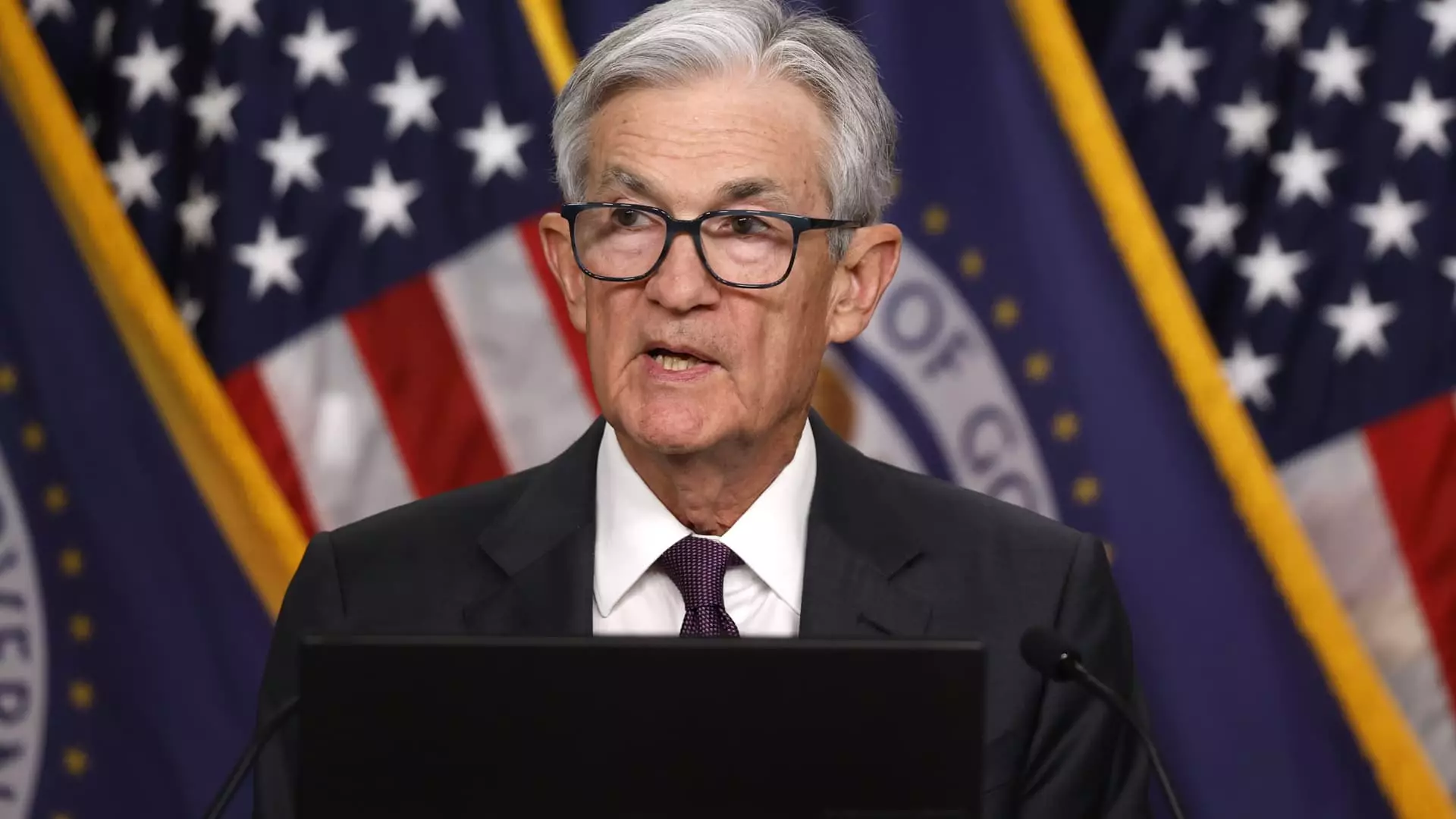As the Federal Reserve decided to keep its key interest rate untouched at a range of 4.25%-4.5%, the atmosphere of uncertainty surrounding the U.S. economy has reached alarming levels. This decision is not merely a reflection of financial metrics but also an acknowledgment of the unpredictability stemming from the Trump administration’s sweeping trade policies. The Fed’s cautious approach might seem prudent, but it sheds light on a deeper malaise affecting economic stability. What we are witnessing is a perfect storm—a combination of inflation risks and rising unemployment forecasts that echo the economic nightmares of the 1980s.
Chair Jerome Powell, during his post-meeting address, attempted to convey confidence, yet his statements hinted at anything but reassurance. The phrase “risks of higher unemployment and higher inflation have risen” is a formidable warning. It underlines a troubling duality where the Fed may soon find itself pressed between slow economic growth and the specter of spiraling prices—primarily fueled by the contentious tariffs imposed by the current administration. This complexity demands a strategic recalibration that, if mishandled, could substantially hamper American economic vigor.
Imperative Trade Dynamics
The Federal Reserve’s tactical pause signals not just a cautious approach but an acute awareness of the trade war turmoil impacting the U.S. economy. When President Trump instituted broad tariffs on imports, he opened the floodgates to agonizing uncertainty, not only disrupting supply chains but also destabilizing consumer confidence. The Fed’s reticence regarding immediate policy changes stems from the anticipation of imminent impact; higher tariffs could precipitate stagflation, an unnerving blend of stagnant economic growth coupled with inflationary pressures.
Market analysts have noted how such policies seem to invite conflicting economic signals. While job growth remained robust—177,000 new jobs in April—the looming question is whether this growth is sustainable. It’s reassuring that unemployment hovers at a low of 4.2%, yet who feels this prosperity? Wage growth has stagnated for a significant segment of the workforce, and this isn’t merely a statistic; it’s reflective of families grappling with real economic pressures.
Market Reactions: A Precarious Balance
Post-rate announcement, stock markets displayed a momentary flicker of apprehension before most of the losses were clawed back. The Dow Jones Industrial Average’s fluctuating performance epitomizes the precarious market atmosphere where investor sentiment swings like a pendulum based on news cycles concerning trade negotiations. The Fed’s statement on economic risks and tariff impacts indicates to investors that we are walking a tightrope. While optimism in the market prevails, the underlying volatility chokes off any real confidence.
Krishna Guha of Evercore ISI pointedly remarked that the implications for risk assets appear dismal. If the Fed categorizes the economic outlook as uncertain, it’s not just an economic note to which to pay attention; it is a harbinger of the potential for an economic setback that could upend the trading landscape. The ongoing negotiations with trading partners are essential, and yet the uncertain nature of diplomatic approach looms larger than numbers in reports. The stakes are high and the Fed’s decisions will rapidly become pivotal.
Calibrating the Fed’s Dual Mandate
Navigating the Fed’s dual mandate of ensuring full employment while maintaining price stability has never been more fraught with challenges. The tug-of-war between increasing inflation—driven largely by tariffs—and decreasing economic growth paints a stark picture of the Fed’s task ahead. With inflationary indicators pushing above the 2% mark, the Fed will increasingly feel the pressure to make-precise assessment of how to maintain economic health without igniting a devastating inflation cycle.
Herein lies a conundrum—one that Fed policymakers recognize but cannot mitigate without a clear resolution on the trade front. How can they assuage inflation concerns when consumer prices remain vulnerable to external shocks? It’s a precarious balancing act that requires foresight and an uncanny ability to navigate political waters that are anything but tranquil.
The Shadow of Future Uncertainty
Far from being merely a central bank’s dilemma, the Fed’s current stance impacts everyday Americans. As interest rates influence consumer debt, including mortgages and auto loans, average families are at the mercy of economic tides they do not control. The very foundation of economic stability appears at risk, not merely because of market dynamics, but due to a political ambiance teeming with unpredictability. The fear is that recklessness from the political echelon could elicit repercussions that reverberate throughout the economic fabric.
As the Fed remains committed to waiting for the dust to settle on trade negotiations, the socioeconomic specter continues to haunt American households. The specter is one of an economy straining to remain buoyant while anchored to the uncertainty of policy changes that are dictated beyond its shores—beyond its control.
The decisions made today will resonate for years to come, and as the Fed holds the line, it’s crucial to recognize the swirling implications of their strategy, a strategy that could either protect or endanger the very essence of the American economic story.

